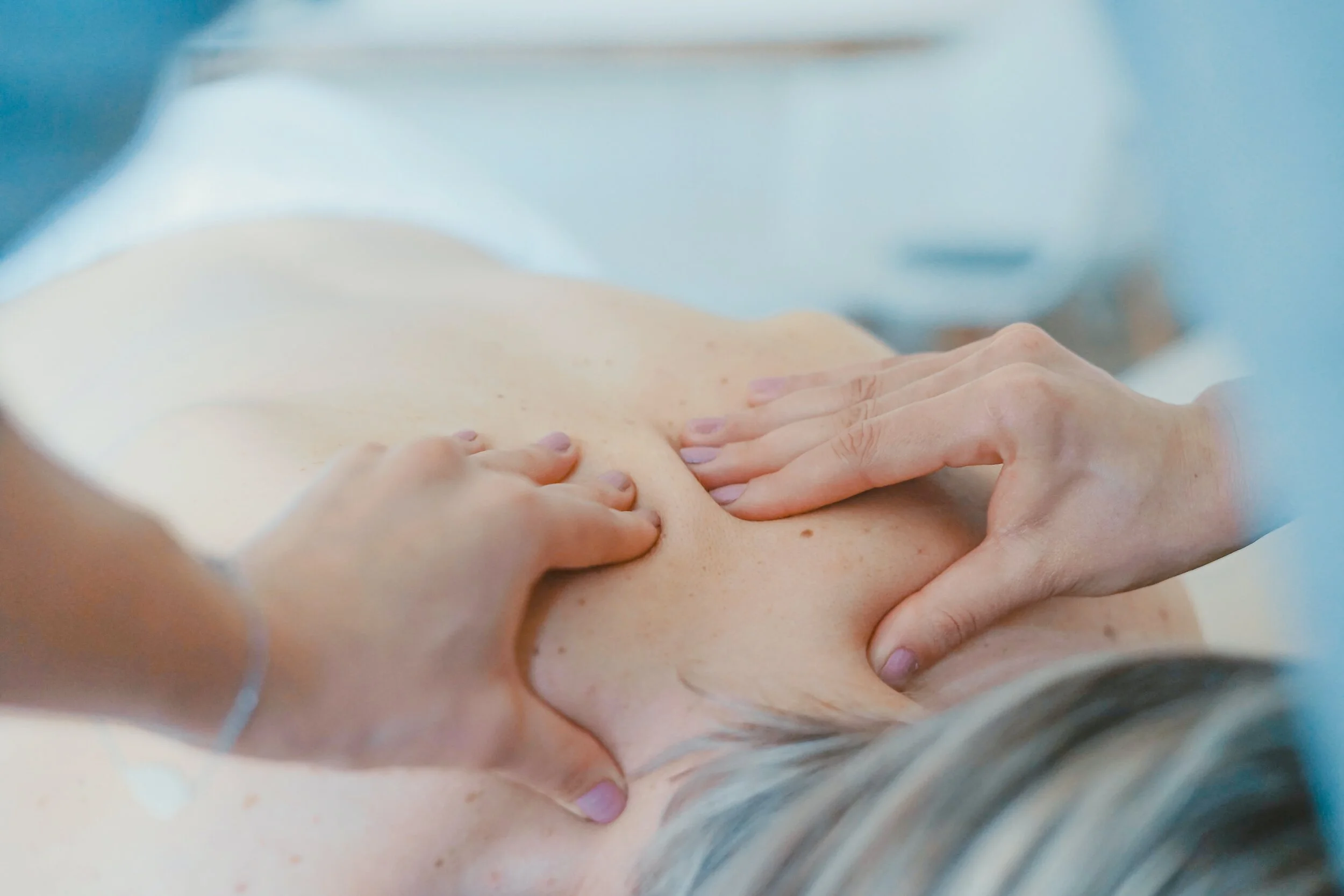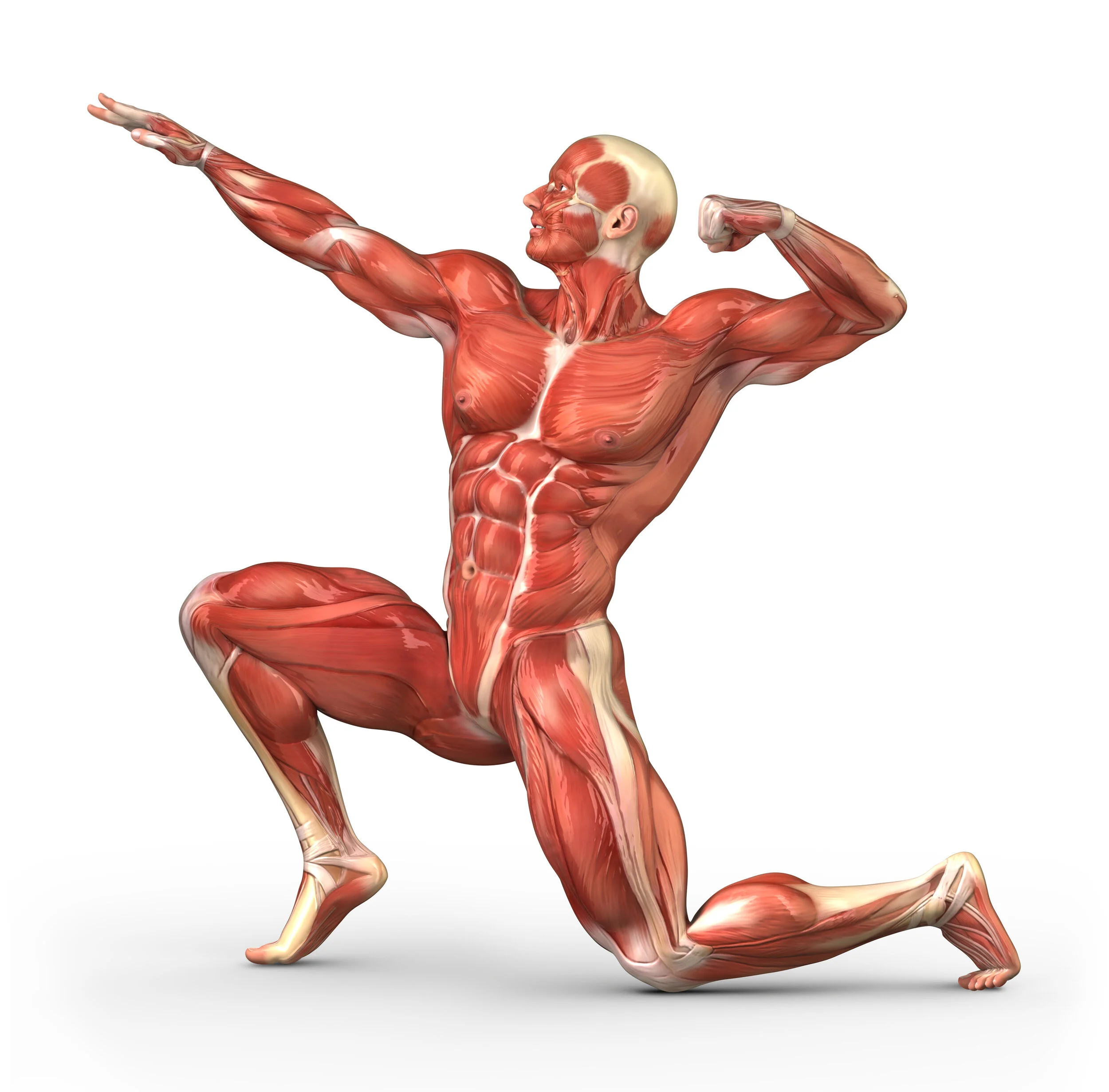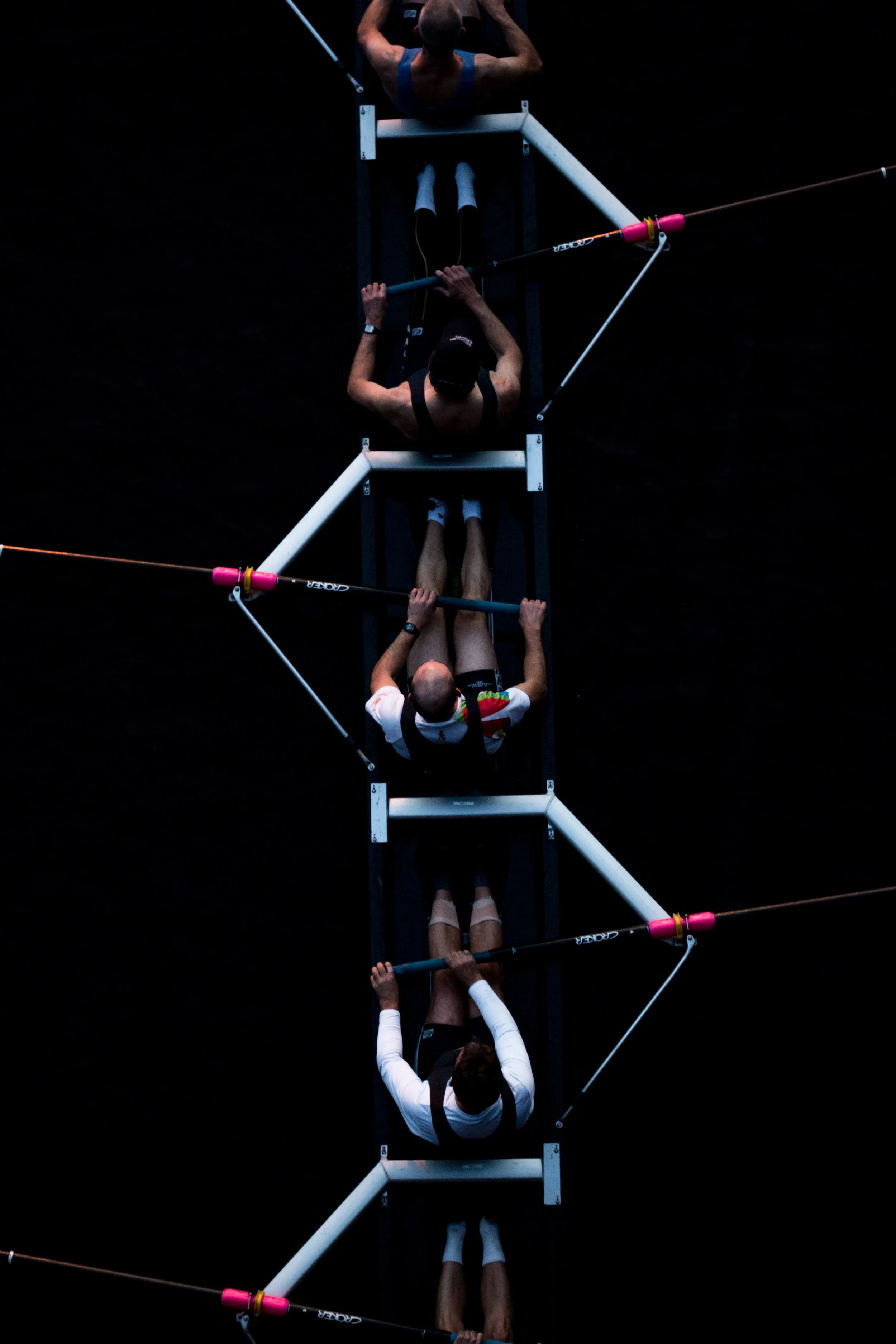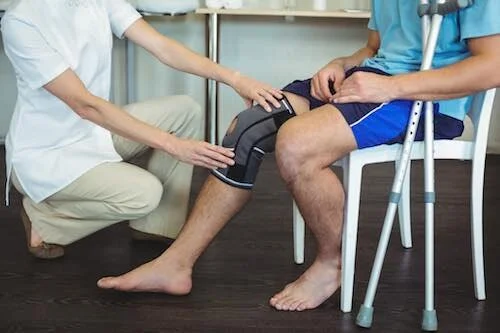Conditions treated
Spinal problems
Back pain
It is estimated that 80% of the population will suffer back pain at some time in their life. Although some people can associate their back pain to a specific traumatic incident or event, the vast majority have no explanation as to how their pain began. As with all aches and pains, early diagnosis, advice and treatment is important to eliminate pain and prevent its reoccurrence.
Causes of back pain
Here is some useful advice from the Chartered Society of Physiotherapy about the causes of back pain:-
‘In most cases, it is not possible to identify the exact cause of back pain. It is important to know that any kind of structural damage is rare.
While it can be painful and upsetting, this type of back pain usually gets better quickly. It can be managed through advice and remaining active.
Many physical or psychological factors can cause back pain and often a combination of these are involved.
Many factors can cause back pain and often a combination of these are involved.
They could be:
Physical factors, such as ‘protecting’ the back and avoiding movements, or a simple strain.
Psychological factors, including a fear of damage or not getting better, feeling down or being stressed.
More general health and lifestyle factors, like being tired and rundown, not getting enough good quality sleep, being overweight or not getting enough physical activity
Social triggers, such as difficult relationships at work or home, low job satisfaction or stressful life events, like a family death or illness.
Crucially, it’s important to know that all pain is 100 per cent real and never ‘all in your head’, even when factors like stress or mood are involved.
Each of the factors can turn up the volume on your pain and gaining a greater understanding of when that can happen puts you in a stronger position to recognise them and learn how to turn down the dial again.
Sometimes there are specific causes for back pain, especially when there is leg pain, pins and needles or numbness too. This can be caused by irritation or compression of the nerves in the back.
Symptoms to be aware of:-
These symptoms are very rare but you should contact a doctor if you experience any of them:
Difficulty passing urine or having the sensation to pass water that is not there
Numbness / tingling in your genitals or buttocks area
Loss of bladder or bowel control
Impaired sexual function, such as loss of sensation during intercourse
Loss of power in your legs
If you are experiencing pain that runs down the back of both legs
Feeling unwell with your back pain, such as a fever or significant sweating that wakes you from sleep
Most lower back pain originates from the soft tissues (ligaments, muscles, articular cartilage, joint capsule and intervertebral disc). If bony injuries occur, they are usually seen in athletes who participate in extension/rotation sports (e.g. gymnastics and cricket fast bowlers) or older individuals.
Back pain may be due to many other conditions affecting the spine such as stenosis (narrowing of the spinal canal that causes pressure on the spinal cord or nerve roots), spondylosis (age-related changes to the bones and discs i.e. osteoarthritis and degenerative disc disease) and spondylolisthesis (one spinal vertebrae slips forwards over another).
Osteoporosis is a condition that weakens bones, making them fragile and more likely to break. It develops slowly over several years and is often only diagnosed when a fall or sudden impact causes a bone to break (fracture). The most common cause of osteoporosis pain is a spinal compression fracture. The muscles supporting the back tighten to protect it (protective muscle spasm) which causes nerve compression and pain. Physiotherapy can help strengthen your bones and muscles which can reduce the risk of falling and improve your balance.
Pregnancy related back pain (pelvic girdle pain or symphysis pubic dysfunction) is common. The pelvis consists of 2 halves connected at the front by a fibrocartilaginous joint called the symphysis pubis. Normally very little movement occurs at the joint (symphysis pubis) but the pregnancy-related hormone, relaxin, softens the ligaments at the symphysis pubis and the sacroiliac joints at the back of the pelvis. This facilitates passage of the baby during pregnancy. Consequently there is greater joint laxity at the symphysis pubis and sacroiliac joints during pregnancy and up to 3 months post childbirth. Joint laxity causes excessive strain on the ligaments and muscles surrounding the joint which can lead to pain and dysfunction.
Neck pain
Like back pain, neck pain may be have many causes. If the nerves in the neck are irritated pain is often felt in the arm and shoulder blade area.
Neck pain due to whiplash injuries (rapid movement of the head on the torso forwards and backwards) typically develops over hours and days.
Neck injuries may cause headaches (Cervicogenic headaches). This is a pain that develops in the neck but is felt in the head.
Muscle Strains
When a muscle is over stretched (strained) the tissues become overloaded and reach breaking point. A tear or partial tear occurs. Pain develops and will continue when the muscle is stretched or contracts. Muscle strains are graded according to their severity:-
Grade 1 strains - Mild strains to individual muscle fibres (less than 5% of muscle fibres), 2-3 weeks rest from sport
Grade 2 strains - Moderate strains, more extensive muscle fibre damage, 3-6 weeks rest from sport
Grade 3 strains - Severe strains, complete muscle rupture, usually surgery is needed to repair the muscle, 3-12 months rest from sport
All muscle strains need time to rest and heal. The healing process involves an initial inflammatory response which can last 3-5 days. During that time it is essential to rest and protect the injured muscle to prevent further damage. The repair process involved 3 stages:-
Regeneration of the muscle fibres - New fibres form from specific cells within the muscle
Formation of scar tissue - A blood clot forms between the torn ends of the muscle. It forms a scar which makes the muscle more resistant to damage.
Maturation of scar tissue - The collagen fibres that make the scar align themselves in the lines of stress and strain so the muscle can withstand more force.
‘ The Biology of Scar Formation’ by Maureen Hardy in Physical Therapy Vol.69, Number 12 , December 1989 provides a comprehensive description of this process.
Sport injuries
Running injuries
Running injuries often result from:
wearing improper footwear
over-training
under training
not warming-up or cooling down properly
Metatarsalgia
Metatarsalgia manifests causes pain and inflammation in the ball of the foot. It may be caused by wearing shoes with soles that are too thin or inflexible. Forefoot pain occurs when walking and pushing off.
Achilles tendonitis
This is a common, painful condition experienced by runners and many sports people. It affects either the heel or the mid-point of the Achilles tendon just above the heel. It may be an acute injury or chronic.Healing can be slow due to the poor blood supply to the area. Symptoms are gradual onset of pain which starts with exercises and lessens as exercises progresses. Pain usually subsides with rest. Achilles tendonitis can become chronic if the athlete does not rest or seek help at first onset.
Achilles tendonitis is an overuse injury that can be caused by increase in activity, less recovery between activities and exercising in flat shoes which puts stress on the tendon. The condition can be prevented by warming up thoroughly before play and stretching properly afterward. Wearing shoes that provide adequate cushion is also helpful. Proper rehabilitation is necessary if you sustain this type of squash injury in order to prevent from becoming chronic. The athlete should apply the RICE (Rest, Ice, Compression, Elevation) formula at the first sign of injury.
The Iliotibial band injury (’Runner’s knee)
The iliotibial band is a the thick sheath of connective tissue that runs from the hip bone (femur) down the outside of the thigh and attaches to the outside of the shin bone (tibia). As it passes over the bony part on the outside of the knee, it causes friction which leads to pain. A burning sensation on the outside of the knee, or along the entire sheath is felt. Pain increases when the foot strikes the ground.
Shin splints
This condition occurs at the front/inside of the shin bone. Pain occurs when exercise starts, reduces as exercise continues and returns when exercise stops. ,session progresses There may also be lumps or bumps felt over the area.
Cycling injuries
Leg Cramps
Many cyclists experience leg cramps after spending long hours on a bicycle. The muscles repeatedly pump and contract, causing stiffness and an aching feeling. If the condition is chronic and hinders the ability to enjoy a ride, physiotherapy can bring relief and help avoid reoccurance.
Knee Pain
Some cycling injuries occur as the result of climbing steep elevations. In some cases this can be prevented by ensuring that appropriate gears are selected and that the bike is suited for elevated terrain. Correct seat height and handlebar levels are essential. The knee area receives stress from weight bearing pressure and can sustain significant injury.
Back Injuries
Some of the most serious cycling injuries involve trauma to the back and spinal cord. Particularly on a long ride, a cyclist may be hunched over the handlebars for long periods of time. Good posture can prevent some of the strain but physiotherapy is the best cure for back injuries.
Golf injuries
Low back strains
Back pain may be caused by poor swing mechanics, poor conditioning of the body, lack of flexibility and/or a sudden strain.
Shoulder rotator cuff tears
The rotator cuff consists of a group of muscles and their tendons that help to stabilise the shoulder and allow arm movements. A torn rotator cuff is a severe golf injury and can seriously limit shoulder movement and strength.
Shoulder tendonitis, bursitis and impingement syndrome
These golf injuries may result from overuse. Tendonitis is inflammation of a tendon and bursitis is inflammation of the bursa ( a fluid-filled sac which lies between the tendon and the bone). Tendonitis can lead to impingement syndrome as the muscles and tendons become inflamed and swollen. Repetitive overhead arm motions may irritate the muscles, tendons and tissues leading to inflammation and impingement.
Golfer’s elbow (medial epicondylitis)
This is an overuse injury often experienced by golfers due to small tears developing in the forearm tendons. Pain occurs on the inside of the elbow. It increases when flexing the wrist and grasping objects.
Football injuries
ACL (anterior cruciate ligament) tears
Knee pain, swelling and tenderness on the inner side of the knee are the usual symptoms of this common football injury. Physiotherapy helps restore function, range of motion and strength.
Hamstring pull or tear
This is a common football injury and can range from a minor strains to a serious rupture of the hamstring muscle. It is characterised by a sudden, sharp pain at the back of the thigh. Movement may be significantly disrupted.
Patellofemoral pain syndrome
This term refers to pain under and around the kneecap . It is also called ‘Runner’s knee’. Because the patella can move in different directions, inadequate muscle strength, overuse or improper balance can affect the patella and cause knee pain.
Shin splints
Shin pain can be caused by trauma, repeated stress on the leg as a result of over-training or excessive running on hard surfaces. Beginners are prone to this type of football injury as their muscles, bones and joints are not used to the effects of high-impact sports.
Rugby injuries
Rugby is a tough, fast-moving sport that incurs a number of injuries from tackling and scrummaging.
Muscle strains
These can result from a sudden force applied to the ligaments during a tackle. Poor conditioning, lack of flexibility and overuse can lead to muscle pain.
Fractures
Fractures, usually of the clavicle (collar bone), are quite common among rugby players. Falling onto an outstretched arm or coming into contact with another player can cause a clavicular fracture. Extreme pain, swelling and a bony deformity can occur. Physiotherapy is greatly beneficial after the fracture has healed.
Knee meniscal injuries
The menisci are bands of cartilage that act as shock absorbers to the knee and help distribute weight evenly between the tibia (shinbone) and the femur (thighbone). During tackles the medial meniscus is more likely to be injured as forces are impacted from the outside of the knee. Twisting of the knee may also lead to a meniscal tear. Knee pain is felt on the inside of the joint. Swelling usually occurs within a day or two of the injury and it may be difficult to bend the knee fully or bear weight.
ACL (anterior cruciate ligament) knee injuries
These injuries occur when a twisting force is applied to the foot when it is firmly planted on the ground. They can also result from direct trauma from a rugby tackle. There may be an audible pop at the time of the injury, followed by knee pain, swelling and tenderness on the inner side of the knee. It may be difficult to walk or straighten the knee.
Ankle sprains
Sprained ankles are common rugby injuries. They are caused by the stretching and/or tearing of ligaments Swelling, inflammation, difficulty walking and a decrease in the elasticity of the ligament may occur. A serious ankle sprain can be more painful and take a longer time to heal than a broken bone.
Tennis injuries
Tennis elbow (lateral epicondylitis)
This is a common repetitive injury causes elbow pain. Pain is felt on the outside of the elbow and may radiate down the forearm. Lifting heavy objects and gripping objects is painful.
Thumb tendonitis
Inflammation of the tendons of the thumb may occur when someone starts playing tennis for the first time. Poor technique and improper equipment may increase the risk of such injuries developing.
Hockey injuries
ACL (anterior cruciate ligament) rupture
The ACL is an important ligament as it helps to stabilise the knee. ACL ruptures are common hockey injuries, especially in women. They can happen when the knee is twisted during a change in direction.
Knee Meniscus tears
The menisci are made up of two rings of cartilage – the medial meniscus and the lateral meniscus. They act as shock absorbers for the knee. Constant twisting of the knee during hockey can cause pain, swelling, difficulty bearing weight and inability to bend the knee.
Ankle ligament strains
When the ankle turns over causing the sole of the foot to turn inward. ligaments can be easily torn. Usually the ligaments on the outside of the ankle are affected. Symptoms are ankle pain, swelling, stiffness, bruising and an inability to bear weight.
Hamstring strain
Sudden, sharp pain at the back of the leg while sprinting or quickly changing direction can signal a hamstring strain. There may also be pain while stretching the muscle, swelling and bruising. Symptoms may vary from mild to severe. In severe cases, walking is greatly limited and crutches may be needed.
Groin strain
This is a tear or rupture to any of the muscles on the inner side of the thigh constitutes a groin strain.
Cricket injuries
Knee Injuries
The cricket player most prone to knee injuries is the bowler. In a single cricket season, as many as 60% of the bowlers will suffer a knee injury. Common injuries to bowlers are a torn meniscus (knee cartilage),anterior cruciate ligament, medial or lateral collateral ligament.
Shoulder Injuries
Batters and bowlers are prone to shoulder injuries, such as dislocated shoulders, ‘frozen’ shoulders and rotator cuff strains. Often pain, swelling, stiffness and weakness can occurs.
Lower Back Injuries
The most common player to receive lower back pain is a bowler. The back pain occurs mainly in younger, faster bowlers as they have more mobility than their older counterparts. Back injuries can vary from a herniated disc to a muscle strain.
Skiing injuries
Skier’s thumb
Also known as gamekeepers’ thumb, this is a common skiing injury. This injury occurs at the MCP (metacarpophalangeal) joint at the base of the thumb and involves the UCL (ulnar collateral ligament). It usually occurs when the thumb is forced into abduction (movement away from the index finger) and hyperextension (movement backwards) during a fall.
Knee injuries
Medial collateral ligament (MCL) injuries are common in beginning and immediate skiers due to faulty biomechanics. Knee pain, swelling and tenderness occur.
Advanced skiers may suffer an anterior cruciate ligament (ACL) injury. It may occur in conjunction with a medial collateral ligament (MCL) injury and a medial meniscus tear.be There may be an audible pop at the time of the injury, followed by knee pain, swelling and tenderness on the inner side of the knee. It may be difficult to walk or straighten the knee.
Swimming injuries
Swimmers perform a vast number of overhead arm movements during the course of their training. It follows therefore that the shoulders are subjected to tremendous stress and micro-traumas can result. These micro-traumas develop into a number of syndromes: rotator cuff tendonitis, biceps tendonitis and subacromial tendonitis. Overuse and instability are the main causes of swimmers shoulder followed by faulty mechanics, sudden increases in training load or intensity and the use of hand paddles.
Knee injuries involving increased stress on the medial collateral ligament (that stabilises the knee), may occur in young as well as more experienced swimmers.Weak vastus medialis (the inner thigh muscle which is part of the quadriceps), poor mechanics and decreased hamstring flexibility can be contributing factors to knee injuries.
Muscle cramps while swimming can be fatal. They can be mild or painful and occur mostly in muscles that cross two joints, example the calf muscle. Cramps may occur as a result of poor conditioning, muscle fatigue, dehydration or performing a new activity.
The back, neck and upper spine can be injured while swimming due to over stretching during the breast stroke and the repetitive movements associated with front crawl.
Endurance sports injuries
Many endurance sports injuries are the direct result of pushing the body to its limits over a long period of time. For example shin splints and various forms of tendonitis are common among long-distance runners and triathletes, while rotator cuff injuries are common with rowers.
Endurance sport places continual, intense strain on the body which inevitably leads to injury. Physiotherapy is an important element of recovery.
Women’s health Physiotherapy
Urinary incontinence
This is a highly specialised area of physiotherapy which is very effective at reducing incontinence and pelvic floor muscle dysfunction. Physiotherapy has a 80% cure rate for incontinence and is the primary treatment for managing pelvic floor prolapse. Pelvic floor exercises strengthen the muscles around your bladder, bottom, vagina or penis. Strong pelvic floor muscles can help urinary incontinence and pelvic organ prolapse. Women who are pregnant or planning to get pregnant can benefit greatly from doing pelvic floor exercises. The exercises reduce the risk of developing post-natal incontinence. Rebecca can provide individualised pelvic floor and bladder control programmes.
Pre and post-natal back pain
Gentle massage, advice and education on posture, sleeping and sitting positions and lifting techniques and exercises to strengthen the muscles supporting the spine can all help reduce pre and post-natal back pain.
Pelvic girdle pain, pubic symphysis dysfunction, Rectus Diastasis (torn tummy muscles) and menopause related pelvic pain
Rebecca uses ‘hands-on’ treatments and provides exercises and postural and functional advice. Pregnancy, child birth, labour or a caesarean section cause muscle imbalances due to the stretching, shortening and damaging of soft tissues. Looking after your baby, especially as it gets heavier, can put further strain on your body’s postural and muscle control mechanisms. Rebecca can guide you through pilates-based exercises to help you regain your muscle strength and control.
Women going through the menopause will benefit greatly from pilates-based exercises. They help maintain muscle strength and build bone density which is often lost due to falling oestrogen levels.
Post-operative rehabilitation
Rebecca has worked extensively in Orthopaedic Triage Assessment Clinics. She has many years of experience help clients with their post-operative rehabilitation exercises e.g. following knee and hip joint replacement surgery, spinal operations , fractures and joint dislocations.
Podiatry
Rebecca is aware that painful feet can impact on many areas of your life and stop you enjoying all the activities that you love. By assessing client’s foot position and biomechanics she can identify any problems which may require the provision of orthotics (custom made insoles which ensure forces through the foot are directed correctly). She has close working relationships with several excellent podiatrists in Edinburgh who can assess her clients and provide them with orthotics.




